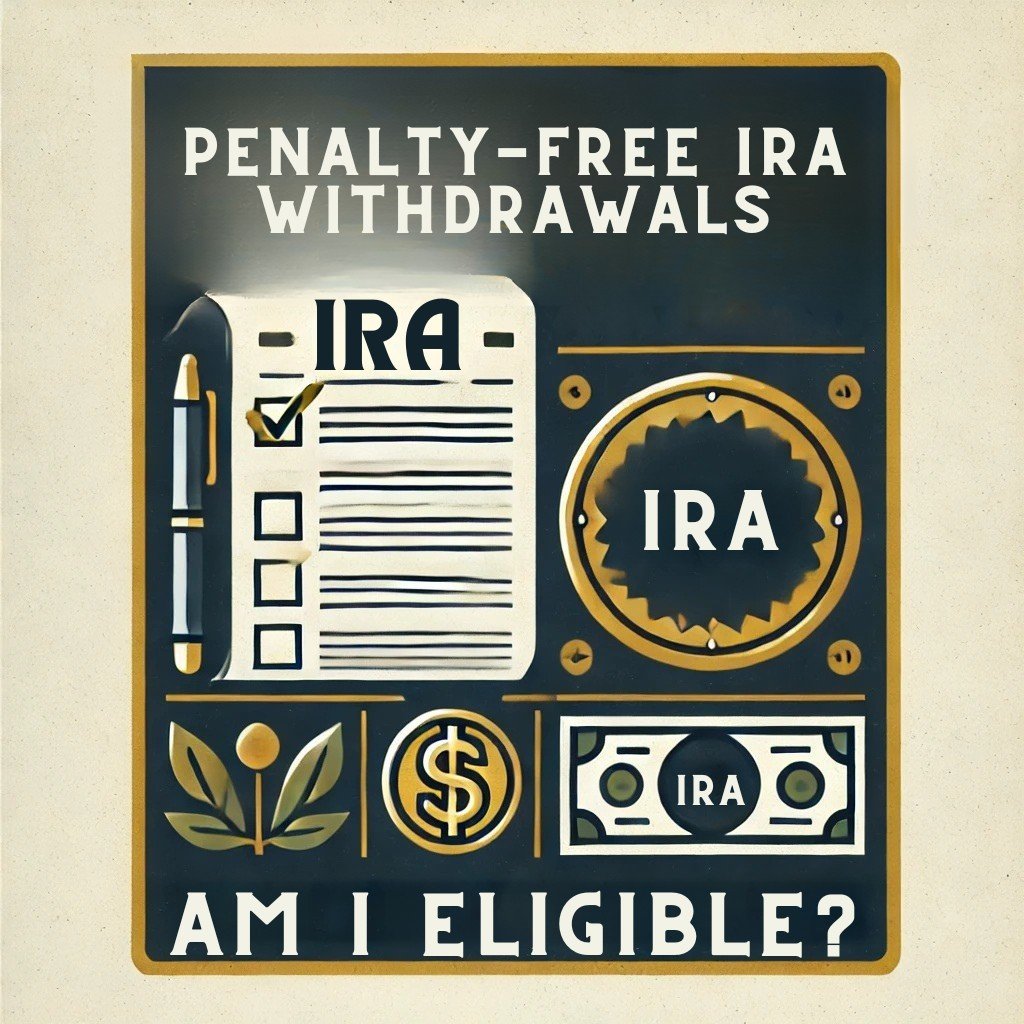Penalty-Free IRA Withdrawals: Am I Eligible?
Withdrawing funds from your Individual Retirement Account (IRA) before age 59½ typically incurs a 10% early withdrawal penalty, but there are specific exceptions that allow for penalty-free withdrawals. Understanding these rules is essential to avoid unnecessary fees and ensure you make the most of your retirement savings.
Certain life events qualify for penalty-free IRA withdrawals, including:
Higher Education Expenses: Tuition, books, and other qualified costs for you, your spouse, children, or grandchildren.
First-Time Home Purchase: Withdraw up to $10,000 for the purchase of your first home.
Medical Expenses: Unreimbursed medical costs exceeding 7.5% of your adjusted gross income (AGI).
Health Insurance Premiums: If you’re unemployed, you may use IRA funds to pay for health insurance.
Disability: If you become permanently disabled, you may qualify for penalty-free withdrawals.
Substantially Equal Periodic Payments (SEPP): These structured withdrawals allow penalty-free distributions based on IRS guidelines.
Military Service: Active-duty reservists called to duty for at least 180 days can access IRA funds penalty-free.
Additionally, Roth IRAs offer more flexibility—you can withdraw your contributions (but not earnings) anytime without penalties. However, traditional IRAs require careful planning to avoid taxes and fees.
Knowing whether you qualify for penalty-free IRA withdrawals can help you navigate financial challenges without losing a portion of your savings. Before withdrawing, consult a financial advisor or tax professional to determine the best strategy for your situation. Proper planning ensures you access your retirement funds efficiently while avoiding unnecessary penalties.

